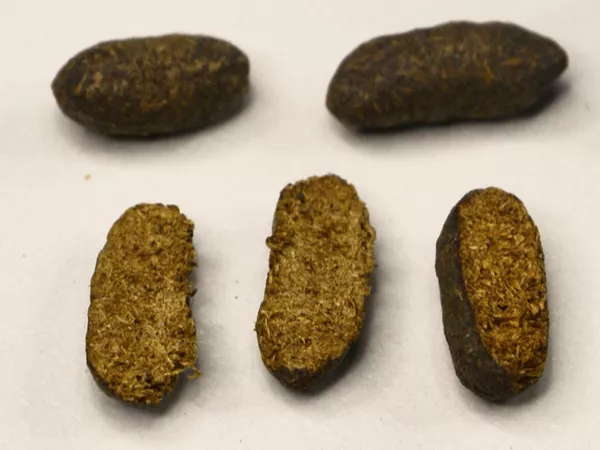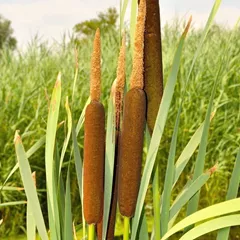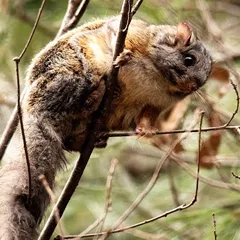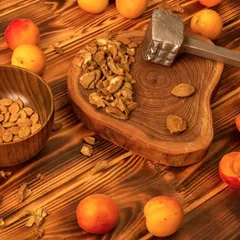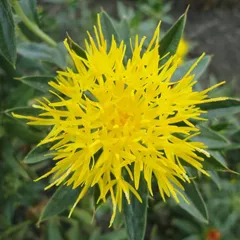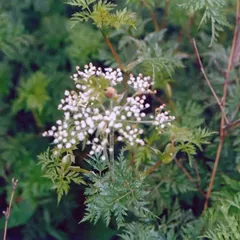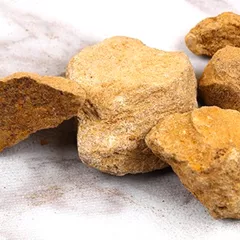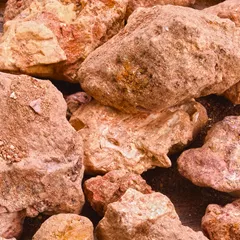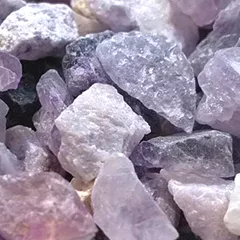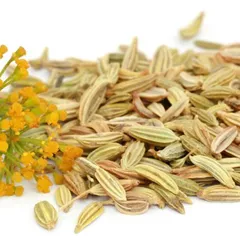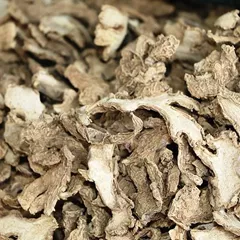Wu Ling Zhi
Wu Ling Zhi
English: Flying squirrel faeces
Chinese: 五灵脂
Use of Wu Ling Zhi (flying squirrel faeces) in TCM
Please note that you should never self-prescribe TCM ingredients. A TCM ingredient is almost never eaten on its own but as part of a formula containing several ingredients that act together. Please consult a professional TCM practitioner, they will be best able to guide you.
Preparation: After harvesting, the sand, gravel, soil and other impurities are removed and the shapes are sorted so we end up with consistent block-sized pieces.
Dosage: 3-9 grams
Main actions according to TCM*: Disperses congealed Blood in the lower abdomen and uterus and relieves pain. Promotes childhood nutrition with Cold Stagnation and focal abdominal swelling.
Primary conditions or symptoms for which Wu Ling Zhi may be prescribed by TCM doctors*: Uterine fibroids Ovarian cysts Uterine cysts Swollen adbomen due to malnutrition Tumors Amenorrhea Snake bites Insect bites
Contraindications*: Avoid during pregnancy and traditionally not to be used with Ginseng.
Common TCM formulas in which Wu Ling Zhi is used*
Shi Xiao San
Source date: 1108 AD
Number of ingredients: 2 herbs
Formula key actions: Invigorates Blood. Dispels Blood Stagnation. Eases pain.
Conditions targeted*: Irregular menstruationDysmenorrhea and others
Wu Ling Zhi is a king ingredient in Shi Xiao San. Like the name indicates, it means it has more power than other ingredients in the formula.
In Shi Xiao San, Wu Ling Zhi is sweet and warming. It promotes Blood circulation and removes Blood Stagnation.
Shen Tong Zhu Yu Tang
Source date: 1830
Number of ingredients: 12 herbs
Formula key actions: Invigorates Blood. Unblocks painful obstruction. Relieves pain. Invigorate Qi. Dispels Blood Stagnation. Unblock Channels.
Conditions targeted*: Muscle crampsArthralgia and others
Wu Ling Zhi is an assistant ingredient in Shen Tong Zhu Yu Tang. This means that it either serves to reinforces the effect of other ingredients or it moderates their toxicity.
In Shen Tong Zhu Yu Tang, Wu Ling Zhi invigorates Blood and Qi so as to stop pain.
Zhen Ling Dan
Source date: 1107 AD
Number of ingredients: 8 herbs
Formula key actions: Stabilizes uterine bleeding . Clears Blood Stagnation .
Conditions targeted*: Dysfunctional uterine bleedingPelvic inflammatory disease and others
Wu Ling Zhi is an assistant ingredient in Zhen Ling Dan. This means that it either serves to reinforces the effect of other ingredients or it moderates their toxicity.
In Zhen Ling Dan, Wu Ling Zhi is acrid and warming. Thus it invigorates the Blood and transforming Stagnation. It also regulates the Qi and
alleviate pain.
Ge Xia Zhu Yu Tang
Source date: 1830 AD
Number of ingredients: 12 herbs
Formula key actions: Invigorates Blood. Eliminates Blood Stagnation below the diaphragm. Stops pain. Promotes Qi movement.
Conditions targeted*: AmenorrheaPainful menstruations and others
In Ge Xia Zhu Yu Tang, Wu Ling Zhi invigorates Blood, eliminates Stagnation and stop pain
Shao Fu Zhu Yu Tang
Source date: 1830 AD
Number of ingredients: 10 herbs
Formula key actions: Expels Cold and warm the menstruation Blood. Stops pain. Invigorates Blood. Dispels Blood stagnation.
In Shao Fu Zhu Yu Tang, Wu Ling Zhi invigorates Blood, eliminates Stagnation and stops pain
Key TCM concepts behind Wu Ling Zhi's properties
In Traditional Chinese Medicine (TCM), Wu Ling Zhi belongs to the 'Herbs that invigorate the Blood' category. Like the name indicates these herbs tend to stimulate the Blood flow. In TCM they're used to help the circulation of Blood in cardiovascular conditions or menstrual irregularities as well as to treat acute pains caused by Blood Stagnation. They can also be used to treat Blood Stagnation when it causes certain tumors, cysts and hardened clots.
Furthermore Wu Ling Zhi is Warm in nature. This means that Wu Ling Zhi tends to help people who have too much 'Cold' in their body, although with less effect than a plant that would be Hot in nature. Balance between Yin and Yang is a key health concept in TCM. Those who have too much Cold in their body are said to either have a Yin Excess (because Yin is Cold in nature) or a Yang Deficiency (Yang is Hot in Nature). Depending on your condition Wu Ling Zhi can help restore a harmonious balance between Yin and Yang.
Wu Ling Zhi also tastes Bitter and Sweet. The so-called 'Five Phases' theory in Chinese Medicine states that the taste of TCM ingredients is a key determinant of their action in the body. Bitter ingredients like Wu Ling Zhi tends to have a cleansing action on the body by clearing Heat, drying Dampness and promoting elimination via urination or bowel movements. On the other hand Sweet ingredients tend to slow down acute reactions and detoxify the body. They also have a tonic effect because they replenish Qi and Blood.
The tastes of ingredients in TCM also determine what Organs and Meridians they target. As such Wu Ling Zhi is thought to target the Spleen and the Liver. In TCM the Spleen assists with digestion, Blood coagulation and Fluids metabolism in the body. The Liver on the other hand is often referred as the body's "general" because it is in charge of regulating the movements of Qi and the Body Fluids. It also takes a leading role in balancing our emotions.


